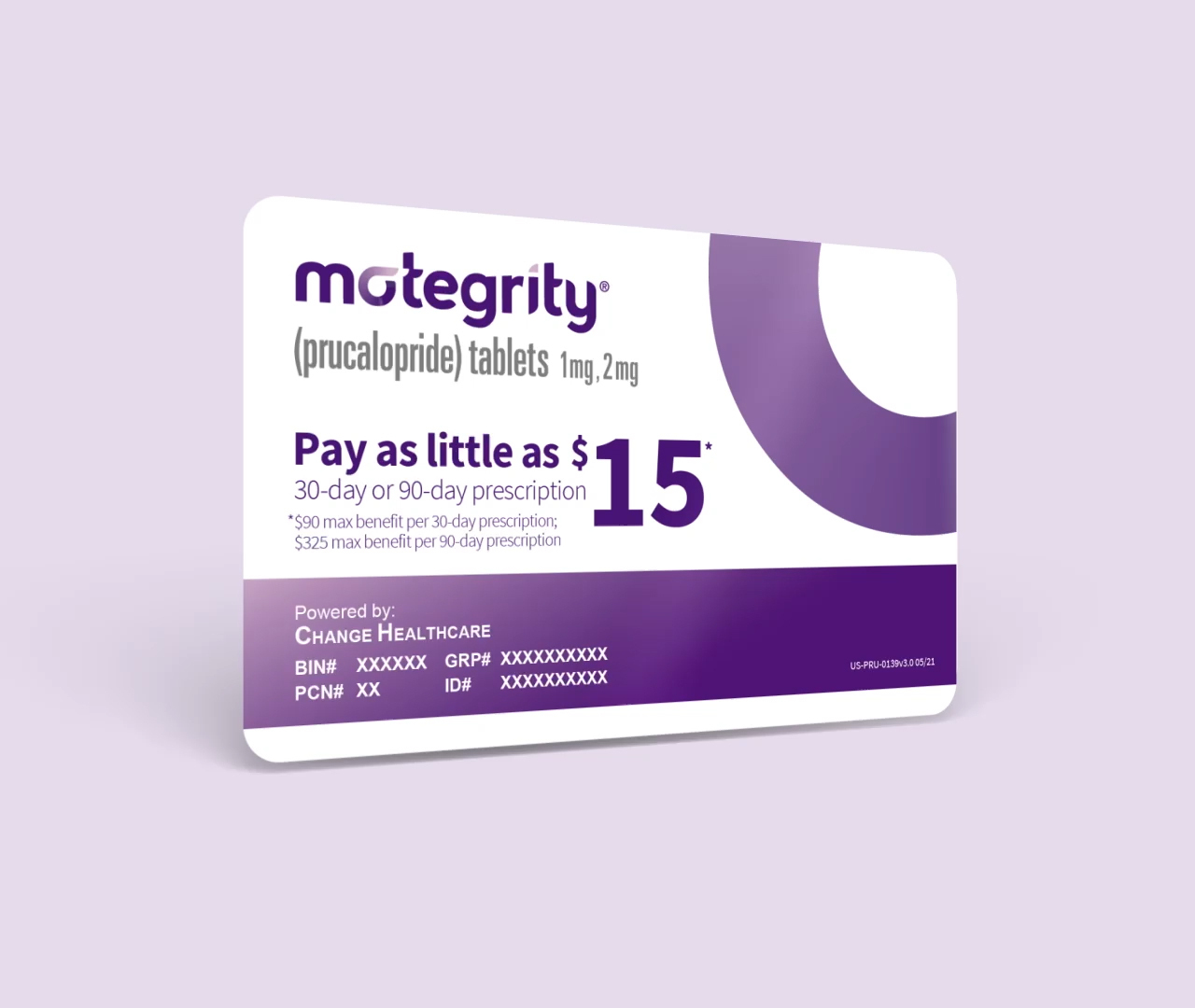

Finance
Why Is Vyvanse Not Covered By Insurance?
Published: November 18, 2023
Discover why Vyvanse is not covered by insurance, and learn how to navigate the financial challenges associated with this medication.
(Many of the links in this article redirect to a specific reviewed product. Your purchase of these products through affiliate links helps to generate commission for LiveWell, at no extra cost. Learn more)
Table of Contents
Introduction
Welcome to our comprehensive guide on why Vyvanse, a widely prescribed medication for attention-deficit/hyperactivity disorder (ADHD), may not be covered by insurance. If you’re familiar with this medication, you may know that Vyvanse can be quite costly, and insurance coverage plays a crucial role in making it affordable for patients. However, there are various reasons why insurance companies may choose not to cover Vyvanse, which can be frustrating for those who rely on this medication to manage their ADHD symptoms.
Before we dive into why Vyvanse may not be covered by insurance, let’s first understand what Vyvanse is and why it is prescribed. Vyvanse is a stimulant medication that contains the active ingredient lisdexamfetamine dimesylate. It is primarily used for the treatment of ADHD in both children and adults. Vyvanse helps to improve focus, reduce impulsivity, and control hyperactivity, allowing individuals with ADHD to better manage their daily lives and responsibilities.
Now, when it comes to insurance coverage for medications, it’s essential to recognize that insurance plans differ in their formularies, coverage policies, and criteria for reimbursement. While some insurance plans may cover Vyvanse without hesitation, others may impose restrictions or even exclude it from their coverage altogether. Here, we will explore some common reasons why insurance companies may opt not to cover Vyvanse.
Understanding Vyvanse
Vyvanse is a medication that belongs to the class of drugs known as central nervous system (CNS) stimulants. It is primarily prescribed for individuals with ADHD, but it may also be used in the treatment of binge eating disorder (BED). Vyvanse is different from other stimulant medications because it is a prodrug, meaning it is inactive until it is metabolized in the body to its active form, dextroamphetamine.
When taken as directed, Vyvanse helps to increase the levels of certain chemicals in the brain, such as dopamine and norepinephrine. These chemicals play a crucial role in regulating attention, impulse control, and hyperactivity. By improving the balance of neurotransmitters, Vyvanse can help individuals with ADHD to better focus, concentrate, and manage their symptoms.
Vyvanse comes in the form of capsules and is typically taken orally once a day in the morning. The dosage and duration of treatment may vary depending on the individual’s age, weight, and specific needs.
It’s important to note that Vyvanse is a controlled substance due to its potential for misuse or abuse. As a result, it is strictly regulated, and prescriptions must be carefully monitored and controlled by healthcare professionals.
Now that we have a basic understanding of what Vyvanse is and how it works, let’s explore the factors that influence insurance coverage for this medication.
Insurance Coverage for Medications
Insurance coverage for medications can vary significantly depending on the specific insurance plan and its formulary. A formulary is a list of medications that an insurance company covers and determines the amount of coverage provided, including copayments, deductibles, and restrictions.
When it comes to insurance coverage for medications like Vyvanse, there are a few key factors to consider:
- Formulary Placement: Insurance plans typically classify medications into different tiers based on their cost and clinical effectiveness. Tier 1 medications are the lowest cost and often have the highest coverage, while Tier 4 medications are the most expensive and may have limited coverage or require prior authorization. Vyvanse’s formulary placement can significantly impact its coverage and costs for patients.
- Generic Alternatives: Insurance companies often encourage the use of generic medications over brand-name drugs to help control costs. Generic versions of Vyvanse, such as lisdexamfetamine, may be available and could be subject to different coverage and cost-sharing requirements than the brand-name medication.
- Prior Authorization: Some insurance plans require prior authorization before they will cover certain medications. This entails obtaining documentation from the prescribing healthcare provider to demonstrate the medical necessity and appropriateness of Vyvanse for the patient’s condition. Prior authorization requirements can delay access to the medication and may involve additional administrative steps.
- Step Therapy Policies: Step therapy policies require patients to try and fail other medications before receiving coverage for Vyvanse. Insurance plans may require individuals to try and demonstrate inadequate response or unacceptable side effects to less expensive or generic ADHD medications before considering coverage for Vyvanse.
- Appeals and Exceptions: In cases where insurance coverage for Vyvanse is initially denied, patients and their healthcare providers may have the option to file an appeal or request an exception. This can involve submitting additional documentation, such as medical records or a letter of medical necessity, to support the need for Vyvanse in the individual’s treatment plan.
Understanding the specific coverage policies and requirements of an insurance plan is crucial for patients and healthcare providers seeking access to Vyvanse. It is recommended to review the plan’s formulary and consult with the insurance company directly to confirm the coverage and reimbursement details for this medication.
Reasons Vyvanse May Not Be Covered by Insurance
There are several reasons why insurance companies may choose not to cover Vyvanse or impose restrictions on its coverage. While it can vary between insurance plans, here are some common factors that may contribute to the lack of coverage:
- Lack of Medical Necessity: Insurance companies typically require evidence of medical necessity to cover certain medications. They may evaluate medical records and documentation to ensure that Vyvanse is being prescribed appropriately for individuals with a diagnosed condition, such as ADHD. If the insurance company believes that Vyvanse is not medically necessary or that alternative treatments may be sufficient, they may deny coverage.
- Availability of Generic Alternatives: As mentioned earlier, insurance companies often prioritize the use of generic medications over brand-name drugs to control costs. With the availability of generic alternatives to Vyvanse, such as lisdexamfetamine, insurance plans may favor these lower-cost options over the brand-name medication, resulting in limited or no coverage for Vyvanse.
- Prior Authorization Requirements: Insurance plans may require prior authorization for Vyvanse, meaning that patients and healthcare providers must provide additional documentation to demonstrate the medical necessity of the medication before coverage is approved. If the required documentation is not submitted or doesn’t meet the insurance company’s criteria, coverage may be denied.
- High Cost of Vyvanse: Vyvanse can have a significantly higher cost compared to other ADHD medications. Insurance companies may be hesitant to provide extensive coverage due to concerns about the financial impact on the plan and its members. This can result in higher out-of-pocket costs for individuals seeking to obtain Vyvanse.
- Step Therapy Policies: Some insurance plans have step therapy policies in place, which require patients to try and fail other, lower-cost medications before coverage for Vyvanse is considered. This can pose challenges for individuals who have previously tried alternative medications or have specific reasons for requiring Vyvanse.
It is important to remember that insurance coverage for medications can vary significantly between insurance plans and individual policy terms. While these reasons may contribute to the lack of insurance coverage for Vyvanse, it is crucial for individuals and their healthcare providers to review their specific insurance plan’s coverage policies and explore the available options for obtaining the necessary medication.
Lack of Medical Necessity
One of the reasons why insurance companies may choose not to cover Vyvanse is if they determine that there is a lack of medical necessity. Insurance companies typically require documented evidence that a medication is essential for treating a specific medical condition. In the case of Vyvanse, this would involve demonstrating the medical necessity of the medication for individuals diagnosed with attention-deficit/hyperactivity disorder (ADHD) or binge eating disorder (BED).
To establish medical necessity, healthcare providers must provide comprehensive documentation supporting the diagnosis, including detailed medical records, results of psychological evaluations, and any other relevant assessments. Insurance companies evaluate these documents to determine if the use of Vyvanse is justified and appropriate for the individual’s condition.
Insurance companies may consider several factors when evaluating the medical necessity of Vyvanse, such as the individual’s age, symptoms, and level of impairment. They may also review the individual’s response to previous medications or treatments to assess if Vyvanse is the most appropriate option.
In some cases, insurance companies may require additional information, such as functional impairment reports from schools or workplaces, to further substantiate the need for Vyvanse. It is essential for healthcare providers to collect and provide all relevant documentation to support the medical necessity of Vyvanse for their patients.
It’s important to note that insurance companies may have specific guidelines or criteria for determining medical necessity in relation to ADHD or BED. These guidelines may include diagnostic criteria from recognized medical sources, such as the Diagnostic and Statistical Manual of Mental Disorders (DSM-5), and evidence of functional impairment in daily activities.
If an insurance company determines that there is not enough evidence of medical necessity for Vyvanse, they may either deny coverage entirely or request additional information. In these cases, healthcare providers and patients have the option to appeal the decision and provide further documentation to support the need for Vyvanse as part of the treatment plan.
It is crucial for healthcare providers to work closely with their patients to gather and submit all necessary documentation to establish the medical necessity of Vyvanse. A thorough understanding of the insurance company’s coverage policies and criteria for medical necessity can help mitigate potential coverage denials and ensure that individuals who truly need Vyvanse can access it.
Availability of Generic Alternatives
Insurance companies often prioritize the use of generic medications to control costs. Generic alternatives are identical or bioequivalent versions of brand-name drugs that have the same active ingredients, dosage form, strength, and route of administration. When it comes to Vyvanse, its generic counterpart is lisdexamfetamine.
The availability of generic alternatives to Vyvanse can have a significant impact on insurance coverage for the brand-name medication. Insurance plans may prefer or even require the use of generic versions due to their lower cost. This preference for generics is driven by the aim to provide cost-effective options for patients and to reduce healthcare expenditures for both the insurance company and the insured individuals.
Typically, when a generic version of a medication becomes available, insurance plans will update their formulary to include the generic and make it the preferred option for coverage. This means that individuals seeking coverage for Vyvanse may be required to try the generic alternative before receiving approval for the brand-name medication.
While lisdexamfetamine is considered the generic form of Vyvanse, it is important to note that it may not be available in all countries or in the exact same dosage strengths as the brand-name medication. Insurance plans may have specific coverage policies for lisdexamfetamine, including copayment or prior authorization requirements.
Patients and healthcare providers should consult with their insurance plans to understand the specific coverage policies and requirements for generic alternatives. In some cases, insurance plans may provide full coverage for the generic version, while others may require additional steps or documentation for coverage.
It is worth noting that despite the availability of generic alternatives, there may still be cases where Vyvanse is necessary due to specific patient factors or treatment considerations. In such situations, healthcare providers can work with insurance companies to provide justification for the use of Vyvanse over the generic alternative through the appeals or exceptions process.
Ultimately, the availability of generic alternatives to Vyvanse can impact insurance coverage, and individuals seeking coverage for the brand-name medication may need to explore the requirements and policies set by their insurance plans regarding generic alternatives.
Prior Authorization Requirements
Prior authorization is a process used by insurance companies to ensure that medications are prescribed appropriately and are medically necessary before providing coverage. Insurance plans may require prior authorization for specific medications, including Vyvanse, as a way to control costs and ensure optimal usage.
With prior authorization, healthcare providers are required to submit additional documentation and information to the insurance company to support the need for Vyvanse. This can include medical records, results of diagnostic tests, documentation of previous treatments, and other relevant clinical information.
The goal of the prior authorization process is to review the medical necessity and appropriateness of Vyvanse for the individual patient’s condition. The insurance company evaluates these documents to assess if the use of Vyvanse aligns with their coverage policies and clinical guidelines.
The specific requirements for prior authorization can vary between insurance plans. Some plans may have detailed forms that need to be completed, while others may require healthcare providers to submit a letter of medical necessity explaining the rationale behind prescribing Vyvanse.
The prior authorization process can often be time-consuming and may lead to delays in accessing Vyvanse. It is important for healthcare providers and patients to be proactive in gathering the necessary documentation and submitting the required information in a timely manner.
If the prior authorization is approved, the insurance company will provide coverage for Vyvanse based on the specific terms of the individual’s insurance plan. However, if the prior authorization is denied, the insurance company may provide a rationale for the denial, such as lack of medical necessity or failure to meet specific criteria.
In cases where the prior authorization is denied, individuals and their healthcare providers have the option to appeal the decision. This involves submitting additional information, such as further medical evidence or an appeal letter explaining why Vyvanse is necessary for the patient’s treatment. The appeals process can vary depending on the insurance plan and may require multiple levels of review.
It is vital for healthcare providers and patients to work together in navigating the prior authorization process. By ensuring that all the necessary documentation is submitted and following up with the insurance company, they can increase the chances of obtaining the prior authorization and accessing Vyvanse.
High Cost of Vyvanse
One of the primary reasons why Vyvanse may not be covered by insurance is its high cost. Vyvanse is a brand-name medication that can be significantly more expensive than other ADHD medications. The high price of Vyvanse can create financial barriers for individuals seeking insurance coverage for this medication.
The cost of Vyvanse varies depending on the dosage strength and the quantity of the medication prescribed. Without insurance coverage or discounts, Vyvanse can be quite expensive, making it difficult for many individuals to afford it out-of-pocket.
Insurance plans carefully assess the cost-effectiveness of medications when determining coverage. They must weigh the potential benefits of Vyvanse against its cost to determine whether it provides sufficient value compared to other treatment options.
Insurance companies often negotiate prices with pharmaceutical manufacturers to secure discounted rates for covered medications. However, even with negotiated rates, Vyvanse may still have a higher cost compared to other ADHD medications, especially generic alternatives.
The high cost of Vyvanse can result in insurance plans implementing stricter coverage policies, such as higher copayments or requiring patients to meet a higher deductible before coverage kicks in. These measures aim to reduce the financial burden on the insurance plan and its members.
For individuals who do have insurance coverage for Vyvanse, they may still face significant out-of-pocket costs, especially if the insurance plan has high copayments. The high cost can lead some individuals to seek alternative treatment options or consider switching to generic alternatives if available.
If individuals do not have insurance coverage for Vyvanse or find it challenging to afford, there are patient assistance programs, manufacturer discounts, and pharmacy discount cards available that may help reduce the cost. Exploring these options and discussing them with healthcare providers can be valuable in ensuring access to Vyvanse despite its high cost.
It’s important to remember that the cost of Vyvanse may vary between different pharmacies and insurance plans. It is recommended to compare prices and coverage options to find the most affordable and suitable solution.
Understanding the high cost of Vyvanse and its potential impact on insurance coverage is crucial for individuals seeking access to this medication. Exploring alternative cost-saving options and discussing them with healthcare providers can help individuals navigate the financial aspects of obtaining Vyvanse.
Step Therapy Policies
Step therapy is a cost-control strategy utilized by insurance plans to guide the prescribing and use of medications. Under step therapy policies, individuals are required to try and demonstrate unsuccessful outcomes or adverse effects from lower-cost or generic alternatives before being granted coverage for more expensive medications, such as Vyvanse.
When it comes to treating attention-deficit/hyperactivity disorder (ADHD), insurance plans may have step therapy policies in place that prioritize the use of other ADHD medications before covering Vyvanse. These policies aim to ensure that individuals have an opportunity to try less expensive medications that have proven efficacy for many patients before considering coverage for a higher-cost medication like Vyvanse.
The specific steps and requirements of step therapy policies can vary between insurance plans. Generally, the individual must first try one or more preferred medications for ADHD, such as generic alternatives or lower-cost branded medications. They must demonstrate either an inadequate response or unacceptable side effects from these medications before proceeding to the next step.
The step therapy process typically involves documenting the failed treatment attempts and submitting this information to the insurance company for review. Once the requirements of each step are met, the insurance company may then approve coverage for Vyvanse.
Step therapy policies can present challenges for individuals and their healthcare providers, especially if they have already tried and failed alternative medications in the past or if there are specific clinical reasons for requiring Vyvanse as the initial treatment option.
In cases where an individual believes that step therapy is not appropriate or feasible for their situation, they have the option to seek an exception or appeal the decision. By providing additional documentation or evidence to support the need for Vyvanse without going through the step therapy process, individuals may be able to obtain coverage for Vyvanse more quickly.
It’s important for individuals to understand the step therapy requirements and policies of their insurance plans. Open communication with healthcare providers and discussing the rationale for starting with Vyvanse as the initial treatment option can help navigate the step therapy process more effectively.
While step therapy policies can pose challenges, they are intended to ensure cost-effective treatment options for individuals with ADHD. By following the steps outlined in the policy, individuals may find success with alternative medications before considering the more expensive option of Vyvanse.
Appeals and Exceptions Process
If insurance coverage for Vyvanse is initially denied or restricted, individuals and their healthcare providers have the option to go through the appeals and exceptions process. This process allows for a formal review of the decision and provides an opportunity to provide additional information or evidence to support the need for Vyvanse.
The appeals process usually entails submitting an appeal letter or form to the insurance company, outlining the reasons why Vyvanse is medically necessary and should be covered. The appeal letter should include supporting documentation, such as medical records, diagnostic test results, or a letter of medical necessity from the prescribing healthcare provider.
Important points to consider during the appeals process:
- Review the denial letter: Carefully read the denial letter provided by the insurance company to understand the specific reasons for the denial. This will help address those concerns in the appeal letter.
- Provide additional evidence: Include any new or overlooked medical evidence that supports the case for Vyvanse. This may include updated medical records, specialist evaluations, or research studies demonstrating the effectiveness of Vyvanse for the individual’s condition.
- Compose a compelling appeal letter: The appeal letter should clearly and concisely explain why Vyvanse is necessary, addressing the specific reasons cited in the initial denial. Use language that highlights the impact on the individual’s quality of life, functioning, and overall well-being.
- Be persistent and patient: The appeals process can take time, and multiple levels of review may be required. Stay in contact with the insurance company, document all communication, and follow up regularly to ensure the appeal is progressing through the appropriate channels.
- Consider external resources: If an appeal is unsuccessful at the insurance level, there may be external resources available for further assistance. This can include contacting patient advocacy organizations, seeking legal advice, or involving a healthcare professional who specializes in insurance appeals.
Exceptions to coverage restrictions can also be requested during the appeals process. For example, if the insurance plan requires the use of generic alternatives, but the healthcare provider believes that Vyvanse is medically necessary, an exception can be requested. This involves providing strong justification and supporting evidence for why Vyvanse is the most appropriate and effective treatment in the individual’s case.
It’s important to note that the appeals and exceptions process may have specific timelines and requirements determined by the insurance company. It is vital to adhere to these guidelines to ensure that the appeal is considered in a timely manner.
Successfully navigating the appeals and exceptions process requires thorough documentation, clear communication, and persistence. By providing compelling evidence and advocating for the medical necessity of Vyvanse, individuals have the opportunity to overturn coverage denials and gain access to the medication they require.
Conclusion
Navigating insurance coverage for Vyvanse, a commonly prescribed medication for ADHD, can be a complex and sometimes frustrating process. Understanding the factors that impact coverage decisions is key to finding a solution that works for individuals and their healthcare providers.
Throughout this guide, we have explored various reasons why Vyvanse may not be covered by insurance. These include factors such as lack of medical necessity, the availability of generic alternatives, prior authorization requirements, the high cost of Vyvanse, and step therapy policies.
It is important for individuals and healthcare providers to review their specific insurance plans’ coverage policies and understand the criteria for insurance coverage of Vyvanse. This includes familiarizing themselves with the prior authorization process, step therapy policies, and the appeals and exceptions process.
Despite the challenges that may arise, there are strategies that can be employed to improve the chances of obtaining insurance coverage for Vyvanse. These include working closely with healthcare providers to gather thorough documentation, exploring generic alternatives where available, and navigating the appeals and exceptions process if coverage is initially denied or restricted.
Additionally, individuals can seek out patient assistance programs, manufacturer discounts, and pharmacy discount cards to help reduce the cost of Vyvanse if insurance coverage is not available.
Ultimately, the goal is to ensure that individuals who require Vyvanse to manage their ADHD symptoms can access the medication in a timely and affordable manner. By understanding the insurance coverage landscape, advocating for medical necessity, and exploring available options, individuals can increase their chances of obtaining the coverage they need to live their lives to the fullest.
It’s important to keep in mind that insurance coverage policies can change, and it is always recommended to stay updated with the latest information provided by insurance companies and consult with healthcare professionals for personalized guidance.














